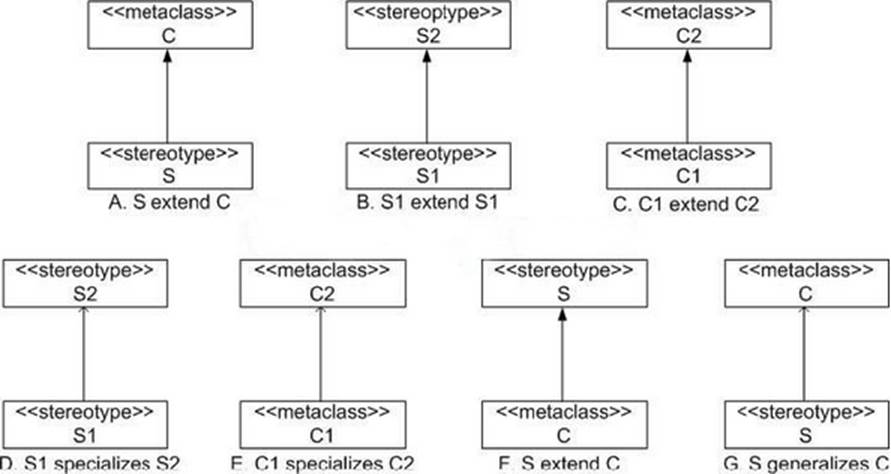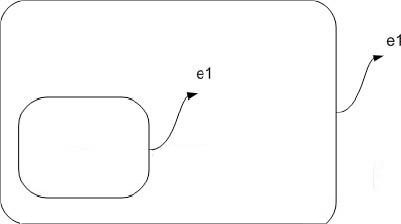OMG OMG-OCUP2-INT200 OMG Certified UML Professional 2 (OCUP 2) – Intermediate Level Online Training
OMG OMG-OCUP2-INT200 Online Training
The questions for OMG-OCUP2-INT200 were last updated at Dec 07,2025.
- Exam Code: OMG-OCUP2-INT200
- Exam Name: OMG Certified UML Professional 2 (OCUP 2) - Intermediate Level
- Certification Provider: OMG
- Latest update: Dec 07,2025
Which figures are correct models for extension and generalization/specialization? (Choose three.)

- A . A
- B . B
- C . C
- D . D
- E . E.
- F . F.
- G . G
What characteristic does a behavior port possess?
- A . owns the behavior of the classifier that owns the port
- B . must have a protocol state machine
- C . has its own behavior that is distinct from the behavior of the classifier
- D . relays any incoming messages directly to the behavior of the owning object
- E . defines the behavior that the owning classifier must realize
- F . is a kind of behavior
Triggers on two different transitions originating from two states at different levels of the same state are simultaneously enabled (as shown in the exhibit).

- A . The state machine is not well-formed.
- B . More deeply nested transitions take precedence over those with less depth.
- C . Both transitions are taken in arbitrary order.
- D . The less deeply nested transition takes precedence over those with more depth.
What is the difference between a stereotype and a metaclass?
- A . Metaclasses can be specialized, but stereotypes cannot be specialized.
- B . Stereotypes can be specialized, but metaclasses cannot be specialized.
- C . A metaclass is a limited kind of a stereotype that can only be used in conjunction with one of the stereotypes it limits.
- D . A stereotype is a limited kind of a metaclass that can be only be used in conjunction with one of the metaclasses it extends.
- E . A stereotype is a specialization of a metaclass that can be used by itself, whereas a metaclass must be used with a stereotype.
What are the kinds of structured nodes? (Choose two.)
- A . partition
- B . object node
- C . loop
- D . action
- E . conditional
What is true of a required interface associated with a port?
- A . identifies the services that the object owning the port expects of objects connected via that port
- B . represents an interface that must be defined in the same package in which the classifier owning the port is defined
- C . identifies the services that the object owning the port can offer to other objects connected via that port
- D . represents an interface that must be defined within the classifier that owns the port
What is true when an event does not trigger any transitions in the current state?
- A . The state machine is not well formed.
- B . The handling of the situation is a semantic point.
- C . An exception is raised.
- D . The event is discarded.
- E . The event is deferred until a state is reached that responds to that trigger.
What does a structured node contain? (Choose two.)
- A . messages
- B . edges
- C . classes
- D . nodes
- E . lifelines
- F . States
What kind of element is a central buffer?
- A . object node
- B . control node
- C . action
- D . behavior
- E . activity
- F . state
What characteristic does a Connectable Element possess?
- A . represents the end of a communication channel
- B . can be connected to other elements by connectors
- C . can have associations
- D . can own connectors
Latest OMG-OCUP2-INT200 Dumps Valid Version with 133 Q&As
Latest And Valid Q&A | Instant Download | Once Fail, Full Refund

